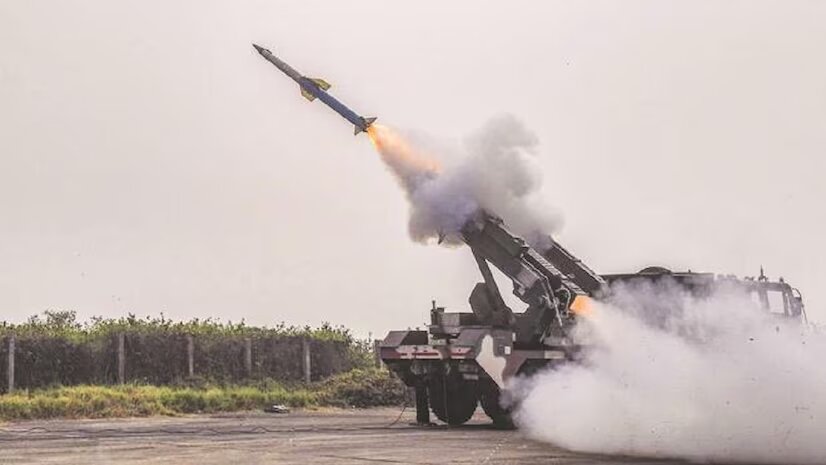India has announced a new list of 928 military items, such as line replacement units, sub-systems, and spare parts, that will not be allowed to be imported between December 2023 and December 2029. This is part of its latest effort to make sure it doesn’t have to rely on other countries for its defense manufacturing needs. It talks about things that are used in fighter planes, trainer planes, vessels, and different kinds of ammunition.
This is the fourth “positive indigenization list” of “strategic” parts used by defense public sector companies (DPSUs) that have been banned from being imported in the last two years.The defense ministry released the three earlier lists in December 2021, March 2022, and August 2022.
The defense ministry said in a statement that the things on the new list have a value of 715 crore when used instead of imports.
“To promote “Atmanirbharta” (self-reliance) in defense and cut down on imports by DPSUs, the defense ministry has approved the 4th positive indigenisation lists of 928 strategically important LRUs/sub-systems/spares and components, including high-end materials and spares, with an import substitution value of 715 crore,” a statement said.
Officials said that these things will only be bought from the Indian industry after the set dates. The new list wants to encourage local production of parts for Sukhoi-30 and Jaguar fighter jets, Hindustan Turbo Trainer-40 (HTT-40) planes, magazine fire-fighting systems on warships, and gas turbine engines.
Some of the parts and subsystems on the previous lists are for fighter jets, Dornier-228 planes, submarines, T-90 and Arjun tanks, BMP-II infantry battle vehicles, warships, and submarines. There are also anti-tank missiles.
About 2,500 things from the first three lists have already been made in India, and officials say that 1,238 more will be made in India in stages until 2028-29. So far, 310 of these 1,238 things have been “indigenized,” they said.
The ministry said in the statement that the DPSUs will take different steps to make these items “indigenous” under the “Make” category, which is the cornerstone of the “Make in India” initiative. These steps include in-house development using the skills of micro, small, and medium enterprises (MSMEs) and private Indian industry. This will give a boost to the growth of the economy, increase investment in defense, and make the DPSUs less reliant on imports.
It was also said that this will improve the design skills of the domestic defense business by involving universities and research centers.
India has used trade bans in two ways to encourage the production of goods made in India.
One way is to ban the import of weapons and systems like fighter jets, warships, helicopters, and artillery guns. The other way is to ban the import of parts, backups, and subsystems that are part of larger weapon platforms.
India has published four other lists that ban the import of 411 different types of weapons and platforms. These include light tanks, naval utility helicopters, artillery guns, missiles, destroyers, ship-borne cruise missiles, light combat aircraft, light transport aircraft, long-range land-attack cruise missiles, basic trainer aircraft, airborne early warning and control (AEW&C) systems, and multi-barrel rocket launchers.
These names were made public in August 2020, May 2021, April 2022, and October 2022, all in the last three years. In these lists, import replacement of ammunition, which is a regular need, has been given extra attention.
In the last four or five years, India has taken a lot of steps to make its defense more self-sufficient. In addition to a number of phased bans on imports, these steps include making a separate budget for buying military equipment made in the country and raising foreign direct investment (FDI) from 49% to 74%.
This year’s defense budget set aside about 1 lakh crore for buying things made in India. In the three years before, that amount was 84,598 crore, 70,221 crore, and 51,000 crore.
India’s arms imports dropped 11% from 2013 to 2017 to 2018 to 2022, but the country is still the biggest importer of military equipment in the world, study released in March by the Stockholm International Peace Research Institute (Sipri) in Sweden.
Along with reducing its reliance on imports, India has been putting more effort into becoming a stronger exporter of military weapons. In the financial year 2022–23, India exported military hardware worth 15,920 crore, which was the most ever and a tenfold increase from 2016–17. Prime Minister Narendra Modi said in April that the increase was due to the popularity of Make in India and key reforms to boost growth in the sector.
India sends defense equipment to about 85 countries at the moment. It has missiles, patrol boats that go out to sea, personal protection gear, monitoring systems, and different kinds of radars. The Tejas light combat aircraft, different kinds of helicopters, artillery guns, Astra beyond-visual-range air-to-air missile, Akash surface-to-air missile system, tanks, sonars, and radars are all weapons and systems that could be exported.
Military affairs expert Lieutenant General Vinod Bhatia (ret.) said that India has a good strategy and action plan in place, backed by forward-looking policies, to make sure that the country can defend itself and become a net producer of weapons in the coming years.
